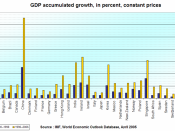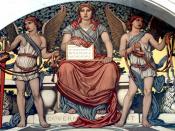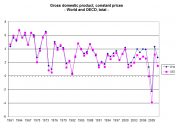1.0 Introduction
As part of the 2014 election campaign, as shadow treasurer for the Peoples Popular Front. I will address the Australian people on the current state of the Australian economy and how it should be managed in the next financial year in this report. The report will investigate this through analysis of the economic indicators and the trend such indicators have had over 10 years. This report will also evaluate how economic policies have been performing in their endeavours of meeting economic objectives and inform of the necessary changes of policies which will be made to strengthen the indicators. These policies are; Fiscal, monetary and trade policies.
2.0 Current State of Australia's economy
Australia's economic assessment for 2013 has remarked according to The Guardian as pretty bleak. "Growth was revised down, unemployment was revised up. It's been that kind of year, a year that has had a fair bit of negativity on the economic front."
(Jericho, 2013) The Australian economy saw a steady growth of 2.8% in 2013 but fell short of the decade long trend of 3%. A 0.8% growth occurred in the last quarter of December, boosting the annual GDP. The main cause of this revised increase was the mining boom, significantly increasing Australia's exports in commodities, mainly iron ore, with its major trading partner, China. The Bank expects unemployment to rise further before it peaks. Over time, growth is expected to strengthen, helped by continued low interest rates and the lower exchange rate. Inflation is expected to be consistent with the 2-3 per cent target over the next two years. (Rba.gov.au, 2014)
2.1 Inflation
Inflation is the rise in price of goods and services within an economy over a period of time, reducing the purchasing power of the currency. (The Economic Times, 2014) Generally, inflation is...


